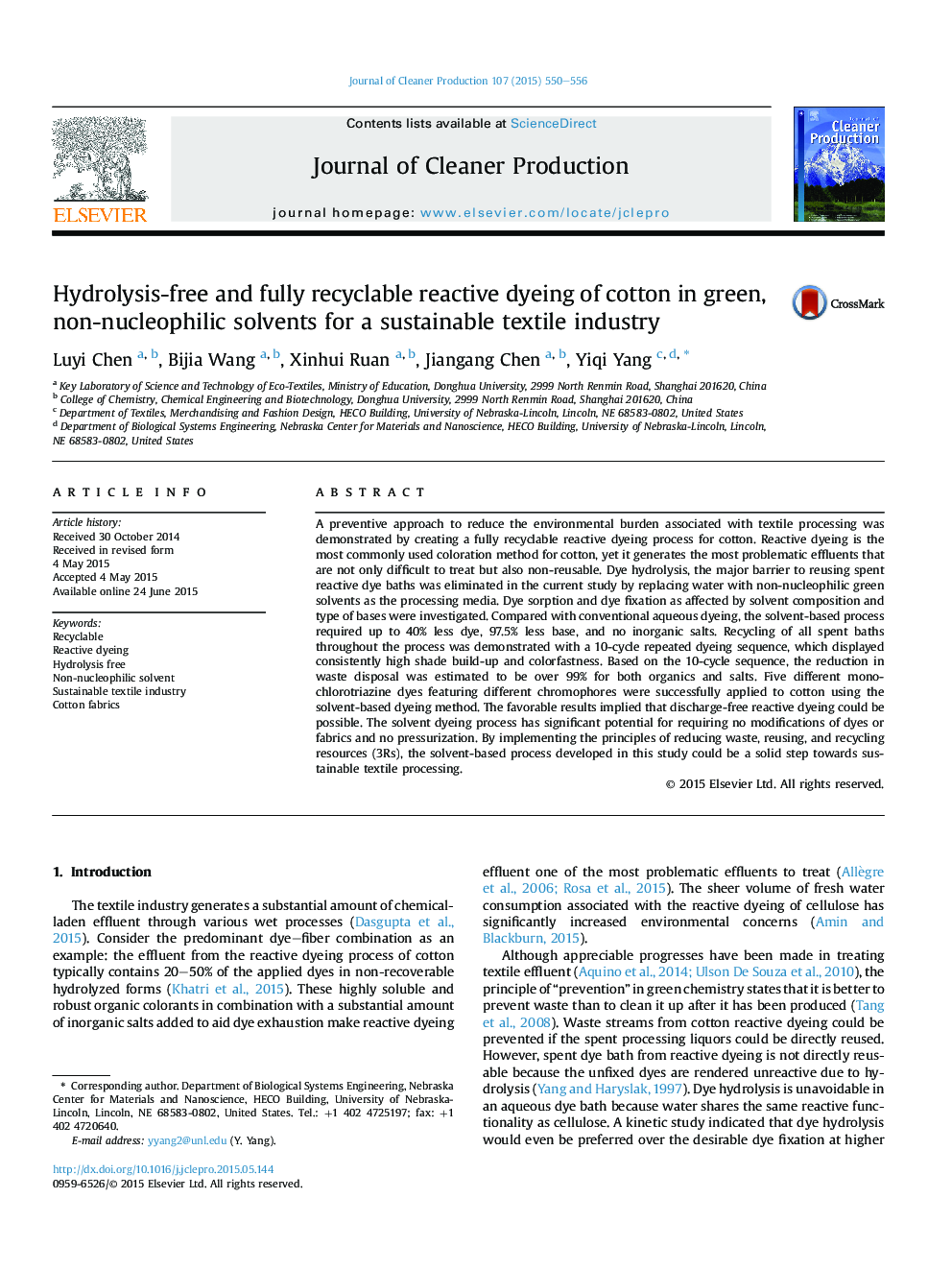| کد مقاله | کد نشریه | سال انتشار | مقاله انگلیسی | نسخه تمام متن |
|---|---|---|---|---|
| 1744445 | 1522139 | 2015 | 7 صفحه PDF | دانلود رایگان |
• Fully recyclable reactive dyeing of cotton is realized in green solvents.
• Dye hydrolysis is eliminated throughout the process.
• Consumes up to 40% less dyes, 97.5% less bases and no inorganic salts.
• Over 99% reduction in waste disposal is achieved with a 10-cycle dyeing sequence.
• High quality dyeing comparable to aqueous dyeing is generally applicable.
A preventive approach to reduce the environmental burden associated with textile processing was demonstrated by creating a fully recyclable reactive dyeing process for cotton. Reactive dyeing is the most commonly used coloration method for cotton, yet it generates the most problematic effluents that are not only difficult to treat but also non-reusable. Dye hydrolysis, the major barrier to reusing spent reactive dye baths was eliminated in the current study by replacing water with non-nucleophilic green solvents as the processing media. Dye sorption and dye fixation as affected by solvent composition and type of bases were investigated. Compared with conventional aqueous dyeing, the solvent-based process required up to 40% less dye, 97.5% less base, and no inorganic salts. Recycling of all spent baths throughout the process was demonstrated with a 10-cycle repeated dyeing sequence, which displayed consistently high shade build-up and colorfastness. Based on the 10-cycle sequence, the reduction in waste disposal was estimated to be over 99% for both organics and salts. Five different monochlorotriazine dyes featuring different chromophores were successfully applied to cotton using the solvent-based dyeing method. The favorable results implied that discharge-free reactive dyeing could be possible. The solvent dyeing process has significant potential for requiring no modifications of dyes or fabrics and no pressurization. By implementing the principles of reducing waste, reusing, and recycling resources (3Rs), the solvent-based process developed in this study could be a solid step towards sustainable textile processing.
Journal: Journal of Cleaner Production - Volume 107, 16 November 2015, Pages 550–556
